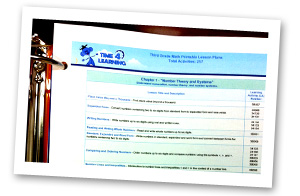

Ask your child to tell you if it looks more like a grown-up frog now. Now it’s almost a grown-up frog, and it is called a froglet. It grows legs in the back first, then in the front, and finally, its tail starts to disappear.

Explain that the tadpole changes as it grows bigger. Assist your child in labeling this piece “froglet”. Then, use the marker to draw front and back legs on the larger tadpoles. Use scissors to cut pointy triangle shapes from the garbage bag to create the tadpoles' tails.
Have your child stamp her thumbprint two or three times on the bottom right portion of the plate. Ask your child if these baby frogs look like grown-up frogs. Explain that tadpoles swim around in the water like little fish. Explain that the eggs hatch into little creatures called tadpoles, and ask your child to describe what they look like - They are black, and have a big end – the head – and a pointy end – the tail. Assist your children in writing the word “tadpole” to label this stage of the frog’s life. Position them horizontally, so they look like they are swimming. Use scissors to cut several small tear-drop shapes from the garbage bag, then glue them on the top right portion of the plate. Explain that real frog eggs are like jelly. Ask your child to describe what the eggs look like - they are clear, or see-through, and they are all clumped together. Explain that frogs hatch from clusters of eggs laid in the water. Assist your child in labeling this part of the plate “eggs”. On the top left portion, glue a square of bubble wrap. Use the marker to draw lines on the paper plate and divide it into fourths. 
Read the book From Tadpole to Frog by Wendy Pfeffer before starting the activity. Show an example of the life cycles for preschool frog craft. Tell them they will be learning the life cycle of the frog, chick, butterfly and plant. Ask children to bring in a baby picture and a recent picture of themselves. Discuss how we go through different stages in our lives. Show students a picture of a baby, child, young adult and elderly person. Each member of a species goes through the same stages as its parents. A life cycle is a sequence of stages through which a living organism passes.







 0 kommentar(er)
0 kommentar(er)
